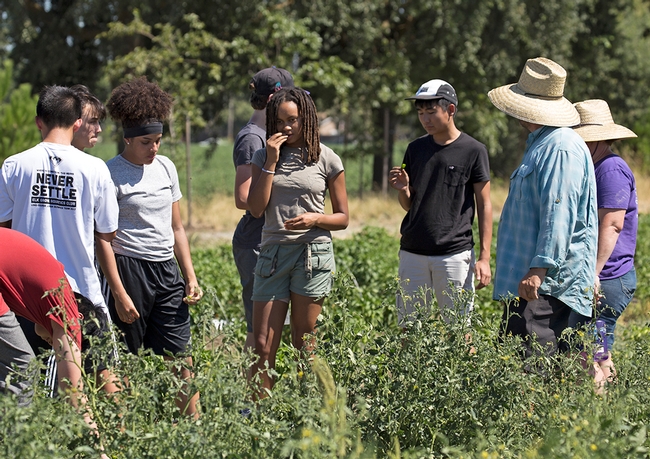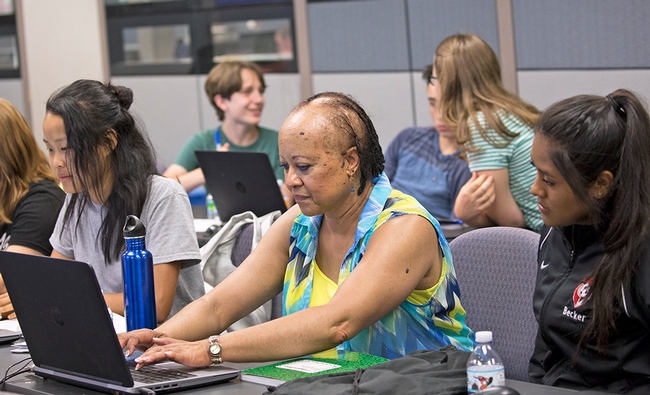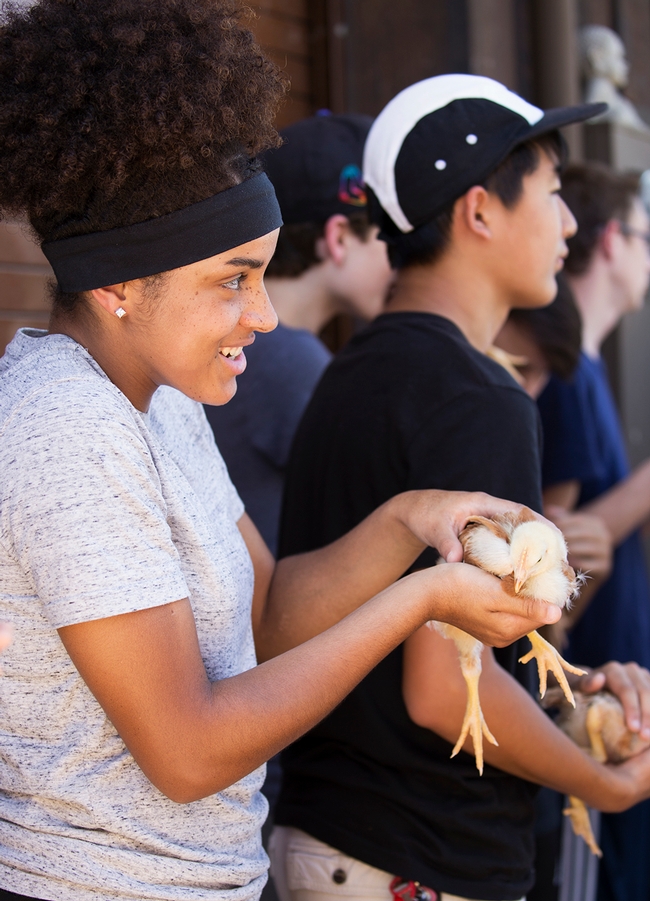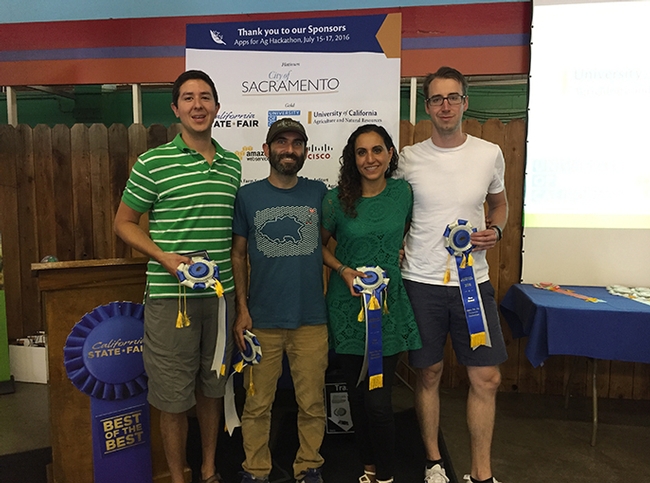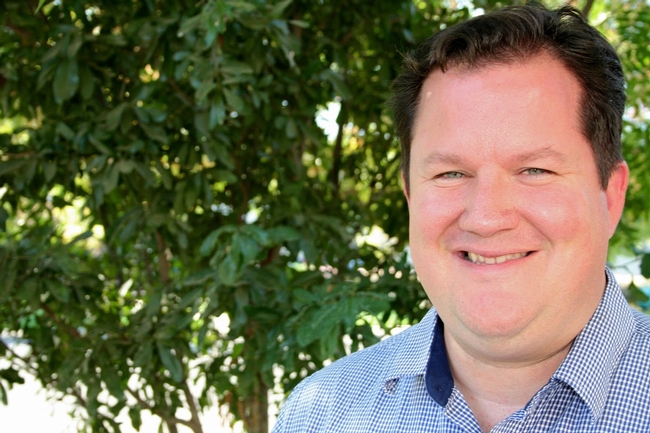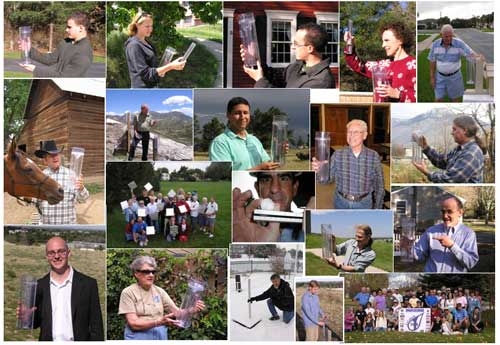Posts Tagged: data
STEAM summer camp introduces teens to ag tech
As part of her job with the USDA, Joyce Hunter often attended meetings focused on using open data from the government to solve problems related to food and agriculture. But she noticed a distinct lack of women and young people at those open data meetings. Hunter was told there just weren't many who were interested.
“I thought to myself, well, they aren't looking in the right places,” said Hunter, an African American woman and former chief information officer at USDA. “Maybe we ought to encourage youth of different cultures and colors in order to ensure the pipeline is filled for the future. So I went to my CIO and asked her if it would be okay to set up an open data camp for youth, particularly underserved youth.”
By partnering with The Governance Lab at New York University and other agencies, Hunter organized summer camps for youth to experience science, technology, engineering, agriculture and math, or STEAM. This summer, she brought the STEAM camp concept to Sacramento. For two weeks in July, about two dozen high-school students went on field trips and engaged in STEAM-based activities as part of the California Open Data STEAM Summer Camp.
“One of the things I love about it is the kids are so curious and they're coming up with their own research questions, with their own challenges,” said Melanie Weir, a STEAM camp instructor. “They're asking questions about why agriculture is important to them. Why food is important to them.”
Adam Low, a sophomore at Franklin High School in Elk Grove, was one of the camp participants.
“I chose the water and drought group because as a Californian, we know California was most recently in a drought. And I wanted to see what this data camp could teach me about water and how it affects agriculture and other topics,” said Low.
“They're traveling all over,” Weir said. “They went to different places. They went to Russell Ranch, they saw the drones, they're really excited about it. They saw the UC Davis laboratory and the UC ANR researchers. They saw helicopters. They saw these big machines that have 35 cameras that do 3-D dimensional pictures of crops and what's out there. They also went to the Cannery and they loved hugging the chickens. They thought it was the greatest thing in the world.”
The California Open Data STEAM Summer Camp was made possible through a partnership between USDA, The Governance Lab and UC Agriculture and Natural Resources.
World hunger is not due to a lack of food
There is 20 percent more food available than needed to feed the whole world, reported Rachel Cernansky on FastCoexist.com. The USDA blames a data gap for the fact that some people go hungry.
Gabriel Youtsey, chief information officer for UC Agriculture and Natural Resources (UC ANR), also believes that if more data was available, consumer-facing apps, in addition to those that help farmers, researchers, industry, or government, would find it useful.
"[They] are interested in more ‘soil to shelf' transparency about how food is grown and produced and how sustainable it is," Youtsey said.
In recent years, app stores have provided an abundance of programs to connect food with people and farmers with information. One such app is "Giving Garden," which in July won the UC ANR "Apps for Ag Hackathon," held in conjunction with the California State Fair.
The hyper-local, produce-sharing app provides gardening advice from the UC Master Gardener Program and helps backyard gardeners connect with others who want to share their produce.
Giving Garden CEO Deema Tamimi said open regional-level data from USDA has been a helpful start, but the agency does not have data on specific microclimates.
"We've seen that there's a lot of people with plant species databases, but they have it under some type of license so you can't just scrape that data and use it," she said. "There's stuff out there, but it's about finding a good data set that's available, and that has no proprietary restriction on top of it."
To advance the open-data cause in agriculture, Youtsey said more public-private partnerships are needed that will help spur innovation and lead to local projects that can have more visible impacts.
"USDA data on data.gov is an excellent resource for apps, and it will be made all the richer once proprietary data stores are further opened up," he said. "It's hard for many to see the benefits of open data until hyper-local success stories start to emerge."
Volunteer weather observation helps scientists track storms
Sponsored in part by the National Oceanic and Atmospheric Administration (NOAA) and the National Science Foundation (NSF), the Community Collaborative Rain, Hail and Snow Network (CoCoRaHS) is a grassroots volunteer network of backyard weather observers.
With a presence in every state in the country, volunteers from all backgrounds work together to measure and map precipitation (rain, hail and snow) in their local communities. The data is used to help scientists across the country measure and track this very important and highly variable part of the climate system. By having thousands of volunteers nationwide providing precipitation data, scientists can track each storm system as it passes across the country and see how precipitation systems vary geographically, seasonally and inter-annually.
Many additional volunteers are needed to provide data for this long-term effort. CoCoRaHS provides training, education and an interactive website to which data is uploaded. It takes about five minutes a day to observe and upload data.
Volunteers can participate as much or as little as they wish. Individuals, groups and schools are welcome to participate. Currently volunteers range from kindergarteners to people in their 90s.
In addition to data collection, CoCoRaHS has many other opportunities for volunteers to become involved in this exciting project – locally, statewide and nationally.
To learn more or to sign up, please visit the CoCoRaHS website.
For additional questions, contact Nolan Doesken at the State Climatologist Colorado Climate Center, Department of Atmospheric Science, Colorado State University Fort Collins, CO 80523. He can be reached by email at nolan@atmos.colostate.edu or by phone 970.491.3690.

